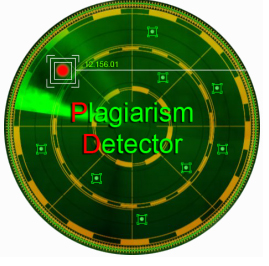Matriarchal Society in The Secret Life of Bees by Sue Monk Kidd
Abstract
This research discusses a novel which written by Sue Monk Kidd entitled The Secret Life of Bees. The writers aims to describe the matriarchal society issue that is often regarded as the opposed of patriarchy. This research aims to answer the question how levels of matriarchal society described in the novel The Secret Life of Bees through women characters in the story. This study applies descriptive qualitative method and typically library research. This research applies socio-historical approach in order to look at the relation between literary work and society’s historical elements that happen in the past. At political level, August character shows as the matriarch or the leader in community with important role for overcoming conflict and decision making process. At economical level, it shows that matriarchal society common practice has right and same position in economic affair and giving gift each other to make the economic condition balance. Last, at spiritual and cultural level, it is described that women characters in The Secret Life of Bees believe in feminine divine which is the Black Mary and doing worship for her. In conclusion, The Secret Life of Bees novel clearly depicts matriarchal society based on the theory of Matriarchy by Heide Göettner-Abendroth.
Keyword: The Secret Life of Bees, Matriarchy, Matriarchal Society, Levels of Matriarchal Society, Socio-historical Approach
Full Text:
PDFReferences
Amelia, Dina & Dintasi, Febri Diantika. 2017. Ephebophilia suffered by the main character in the novel Lolita by Nabokov. Teknosastik: Jurnal Bahasa dan Sastra, 15(2), 81-86.
Aryangga, Afri & Nurmaily, Ely. 2017. Women’s power and stereotype denial in Pocahontas movie. Teknosastik: Jurnal Bahasa dan Sastra, 15(1), 46-58.
Göettner-Abendroth, H. (2009). International Academy HAGIA [Online]. Retrieved from https://www.hagia.de/en/matriarchy/.
Göettner-Abendroth, H. (2012). Matriarchal Socities: Studies on Indigenous Cultures Across The Globe. Peter Lang Publishing.
Göettner-Abendroth, Heide. (2007). The Way into an Egalitarian Society: Principles and Practice of a Matriarchal Politics. International Academy HAGIA. Retrieved from https://www.hagia.de/en/matriarchy/.
Hamilton, Jill. (2013). Five Things We Know about Societies Run by Women [ONLINE]. Retrieved on October 12, 2019, from https://www.damemagazine.com/2013/05/10/five-things-we-know-about-socities-run-by-women/
Harken, Amy Lignitz. (2005). Unveiling the Secret Life of Bees. St. Loui: Chalice Press.
Kies, Samantha Mallory. (2013). Matriarchy, the Colonial Situation, and the Women’s War of 1929 in Southern Nigeria. Eastern Michigan University.
Kurniawan, Heru. (2012). Teori, Metode, dan Aplikasi Sosiologi Sastra. Yogyakarta: Graha Ilmu.
Lina, Desma & Setiawan, Dwi Budi. (2017). An analysis of culture shock from west to east as seen in Rielly’s The Tournament. Teknosastik: Jurnal Bahasa dan Sastra, 15(1), 14-20.
Mohajan, Haradhan, K. (2018). Qualitative Research Methodology in Social Sciences and Related Subjects. Journal of Economic Development, Environment and People, 7, 23-48. Retrieved from https://www.researchgate.net/publication/324151529
Oguz, Ayse. (2007). A look at transition from sociohistorical theory to sociocultural theory. Journal of the Hasan Ali Yucel Faculty of Education, 4(1), 1-19.
Powell, Christopher & François Dépelteau. (2013). Conceptualizing Relational Sociology. New York: Palgrave Macmillan.
Putri, Benedicta. (2010). The Influence of Environment on Lily’s Personality Development in Sue Monk Kidd’s The Sfecret Life of Bees. Sanata Dharma University.
Samanik & Lianasari, Fita. (2016). Antimatter technology: The bridge between science and religion toward universe creation theory illustrated in Dan Brown’s Angles and Demons. Teknosastik: Jurnal Bahasa dan Sastra, 14(2), 18-27.
Swingewood, Alan & Diana Laurenson. (1972). The Sociology of Literature. Paladin.
Yunara, Yurisa Yulia & Kardiansyah, M. Yuseano. (2017). Animus personality in Martin’s A Song of Ice and Fire: A Game of Thrones. Teknosastik: Jurnal Bahasa dan Sastra, 15(1), 7-13.
DOI: https://doi.org/10.33365/llj.v1i1.223
Refbacks
- There are currently no refbacks.
Linguistics and Literature Journal
Published by Universitas Teknokrat Indonesia
Organized by Faculty of Arts and Education
Jl. Zainal Abidin Pagaralam, No.9-11, Labuhanratu, Bandarlampung, Indonesia
Telepon : 0721 70 20 22
W : http://jim.teknokrat.ac.id/index.php/linguistics_and_literature/index










